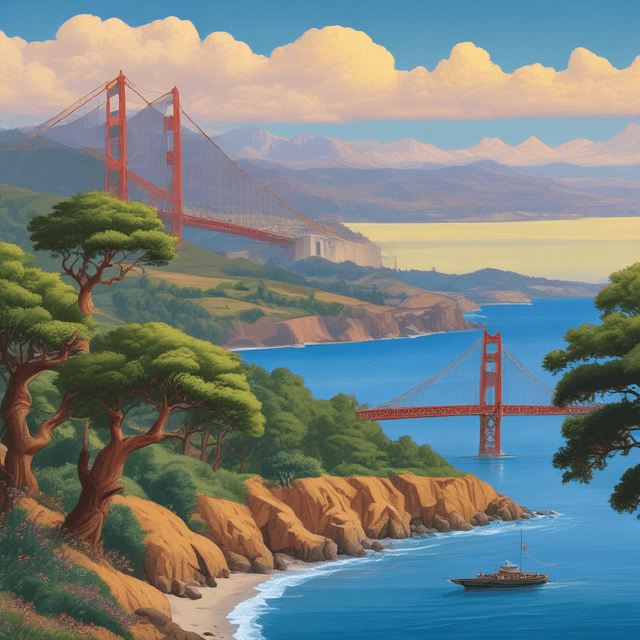
| Name | California |
| Type | Independent country |
| History | Originally colonized, later embroiled in conflicts with indigenous groups and secessionist movements before achieving independence in the late 19th century |
| Location | Pacific coast of North America |
| Politics | Complex political landscape |
| Population | Multicultural population blending indigenous, European, and Pacific Islander influences |
| Environment | Diverse natural environment shaped by active volcanoes and tectonic forces |
| Colonized by |
The Republic of California is an independent country located on the Pacific coast of North America, bordered by Mexico to the south, the Pacific Ocean to the west, the Western United States to the east, and the Cascade Range to the north. With a population of over 40 million, California is the most populous nation on the West Coast and a major global economic and cultural hub.
California was first colonized in the 16th century by the Spanish Empire, who established a series of Catholic missions and presidios (forts) along the coast. In the early 19th century, the region came under the control of the newly independent Mexico, leading to growing resentment and calls for self-governance among the diverse population of Spanish settlers, Californio ranchers, and indigenous groups.
In the 1840s, the Russian Empire expanded its presence in the north, establishing the colony of Russian America and competing with Mexico for control of California. Meanwhile, the Kingdom of Hawaii also extended its influence over the southern and central regions of the state. This complex web of colonial powers and indigenous polities set the stage for decades of conflict and political turmoil.
California's geography and geology are radically different from our own timeline, shaped by active volcanoes, massive inland seas, and powerful tectonic plate movements. The towering Cascade Range and Sierra Nevada mountains were formed by ongoing volcanic activity, with peaks like Mount Shasta, Mount Lassen, and Lassen Volcanic National Park dominating the landscape.
Vast prehistoric lake systems like the Western Interior Seaway and Lake Bonneville cover much of the state's interior, their shorelines marked by dramatic fault scarps and dry lake beds. Earthquakes and volcanic eruptions are a constant threat, regularly reshaping the terrain and posing challenges to human settlement.
This volatile geology also produces a diverse array of mineral resources, from obsidian and pumice to precious metals like gold, silver, and copper. However, the region's hazardous conditions have made large-scale industrialization and resource extraction more difficult compared to our timeline.
California has been home to diverse indigenous tribes and civilizations for thousands of years, including the Chumash, Tongva, Kumeyaay, Ohlone, and Nisenan peoples. These groups developed sophisticated agricultural, political, and spiritual traditions adapted to the region's unique environments.
Even as Spanish, Russian, and Hawaiian colonial powers established footholds in California, indigenous groups maintained a greater degree of autonomy and territorial control compared to the rapid American dispossession in our timeline. Tribes formed alliances and treaties with the colonial powers, preserving their lands and self-governance to a larger extent.
Today, California's indigenous communities continue to play a significant role in the state's politics, culture, and economy, with numerous reservations, tribal governments, and cultural centers dotting the landscape.
The modern Republic of California is a diverse, multicultural nation shaped by its complex colonial heritage and ongoing regional tensions. While the state's economy and infrastructure have developed over the centuries, its political landscape remains more fragmented compared to the centralized power of the United States in our timeline.
California is governed by a parliamentary system, with a president serving as the head of state and government. The unicameral legislature, known as the National Assembly, is the primary legislative body. Political parties span a range of ideologies, from center-left to conservative, with occasional flare-ups of populist and secessionist movements.
The state's economy is diverse, with key industries including agriculture, fishing, mining, renewable energy, and a thriving technology sector centered around Silicon Valley. California also remains a major global center for tourism, arts, and entertainment, drawing visitors from around the world to experience its natural wonders and cultural attractions.
Despite ongoing challenges, California continues to be a vibrant, dynamic, and influential nation on the global stage - a legacy of its unique history, geography, and the persistent influence of its indigenous peoples.